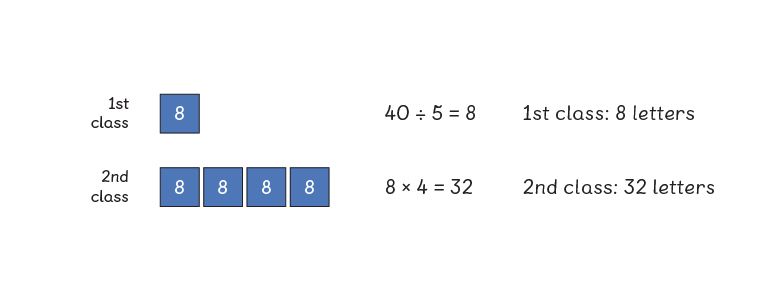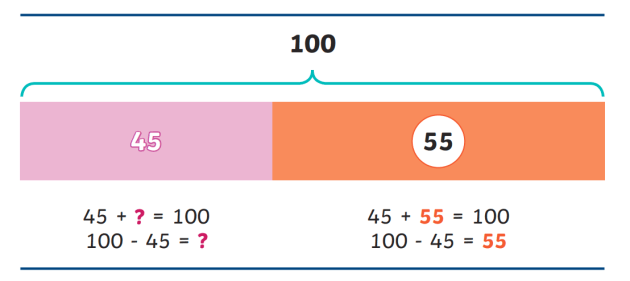How bar model drawing techniques make math problem solving more interactive
All About Bar Version Drawing Techniques: Changing Intricate Mathematics Troubles Into Straightforward Visuals
Bar design drawing strategies use a useful method to understanding complicated mathematics troubles. By standing for numbers and their partnerships via simple rectangular bars, students can visualize operations like enhancement, department, reduction, and reproduction. This method not only enhances comprehension however likewise cultivates important believing skills. As teachers explore the benefits of bar designs, they might reveal brand-new approaches to involve learners in mathematics. What understandings can these strategies supply in real-world circumstances?
Comprehending the Bar Version Principle

The bar design advertises essential thinking by urging pupils to picture analytic procedures. It enables them to determine missing out on values with comparative evaluation of the sizes of benches, making abstract ideas concrete. This technique is particularly effective for more youthful pupils who might fight with numerical depictions alone. Consequently, the bar model fosters a strong foundational understanding of mathematics, improving general analytical skills and promoting self-confidence in managing numerical procedures.
Just How to Create Bar Designs for Enhancement and Reduction
To successfully develop bar models for addition and subtraction, one should first recognize the amounts associated with the problem. This entails identifying the complete quantity, in addition to the individual components that add to that overall. For addition, the model usually includes two bars standing for the different quantities, with a third bar showing their integrated amount. Each bar's length should match to its numerical value, making it easy to envision the partnership between the quantities.
In reduction, the design is slightly various; it includes one bar for the total and one more for the quantity being subtracted. The continuing to be part can be represented as a different bar, illustrating the distinction. By plainly labeling each bar with its equivalent worth, the model becomes a reliable visual device. bar model drawing techniques. This method not only help in comprehending the operations yet additionally improves analytic abilities, making math extra accessible to students
Using Bar Models for Reproduction and Division
Bar versions serve as powerful devices for envisioning multiplication and division, streamlining complex issues into convenient parts. By standing for quantities with rectangular bars, learners can conveniently understand partnerships between numbers. In reproduction, a bar model can show the concept of groups, where one bar stands for the overall amount and smaller sized segments represent private groups. A model could show 4 teams of 3, with the complete size of the bar indicating 12.
In division, bar designs efficiently illustrate the distribution of a complete quantity into equal parts. A solitary bar can stand for the complete number being divided, with segments showing the equivalent components developed. This visual representation assists students comprehend the idea of sharing or separating. Overall, utilizing bar versions for these procedures boosts understanding by changing abstract estimations right into concrete visuals, allowing students to visualize the relationships between divisors and multiplicands properly.
Solving Word Problems With Bar Models
Word problems can often pose challenges for students, making it hard to recognize the needed procedures to solve them. Bar versions act as an important tool in this situation, transforming complicated scenarios right into clear aesthetic representations. By segmenting information into bars, students can much better comprehend amounts and connections included in the problem.
When confronted with a word issue, learners can start by determining essential components such as totals, components, and the relationships in between them. Each element can be illustrated making use of unique bars, allowing pupils to picture the problem's framework. This approach promotes sensible thinking, enabling students to determine which mathematical procedures to more info apply.
When dealing with enhancement or subtraction, the bar version can represent the entire and its parts, while for reproduction and division, it can mark equal teams. In general, bar models simplify the problem-solving procedure, making it more accessible for pupils to get to the correct remedies.
Tips for Mentor Bar Version Techniques Successfully
Reliable mentor of bar version methods can greatly improve pupils' understanding of mathematical concepts. To accomplish this, instructors ought to start by presenting the fundamental principles of bar versions, ensuring that trainees comprehend the partnership between quantities represented aesthetically. Clear, step-by-step demonstrations throughout lessons can assist demystify the process, cultivating confidence in pupils as they find out to use these strategies.
Motivating collective group job can likewise be beneficial, as students can share methods and concepts, strengthening their learning through peer interaction. Teachers should offer a range of method issues, slowly boosting complexity to challenge trainees without frustrating them. Making use of real-life circumstances can make the troubles extra relatable, boosting involvement.
Routine comments is necessary; educators need to supply positive objection that overviews pupils in improving their skills. Incorporating modern technology, such as interactive software program or on the internet resources, can give added support and practice possibilities, strengthening trainees' understanding of bar models.
Real-Life Applications of Bar Version Illustration
While numerous students originally check out bar model attracting as a class tool, its applications expand far beyond academic settings into everyday life. This technique can streamline budgeting, making it possible for people to envision revenue and costs clearly. By damaging down monetary parts right into bars, one can easily determine spending patterns and conserve much more effectively.
In addition, bar models help in planning and organizing jobs. When handling time for various tasks, individuals can represent each job with a bar, providing a visual introduction of priorities and time allowance.

Regularly Asked Inquiries
Just How Do Bar Versions Aid With Pupils' Problem-Solving Skills?
Bar designs improve trainees' analytic abilities by offering a graph of mathematical relationships. This clarity helps them recognize intricate principles, assists in rational thinking, and sustains the advancement of effective strategies for taking on numerous issues.
Can Bar Models Be Made Use Of for Geometry Issues?
Bar designs can certainly be employed for geometry troubles, helping trainees in envisioning connections in between measurements and forms. They assist in understanding of concepts such as location, boundary, and spatial reasoning in an organized way.
Are There Certain Software Application Tools for Creating Bar Versions?
Yes, several software program devices exist for creating bar versions, including Microsoft PowerPoint, Google Slides, and specialized mathematics applications like Mathigon and GeoGebra, which help with the visualization of mathematical concepts with personalized and interactive bar representations.
What Age Perks A Lot Of From Bar Model Techniques?
Youngsters aged 7 to 12 benefit most from bar version techniques (bar model drawing techniques). This age, normally learning fundamental math ideas, locates visual depictions particularly practical for understanding partnerships between numbers and solving intricate issues better
Exactly How Can Parents Support Bar Model Learning in your home?
Moms and dads can support bar design understanding by providing visual help, participating in discussions regarding analytic, motivating technique through games, and strengthening principles with everyday examples, making math enjoyable and relatable for their children.
For addition, the design typically consists of two bars representing the different amounts, with a 3rd bar showing their combined sum. In multiplication, a bar design can illustrate the principle of groups, where one bar represents the total quantity and smaller sections represent private groups. To attain this, educators should begin by introducing the basic concepts of bar versions, ensuring that students grasp the relationship between quantities represented aesthetically. Bar versions boost pupils' analytic abilities by supplying an aesthetic depiction of mathematical partnerships. Bar versions can indeed be used for geometry troubles, assisting trainees in picturing connections between dimensions and forms.